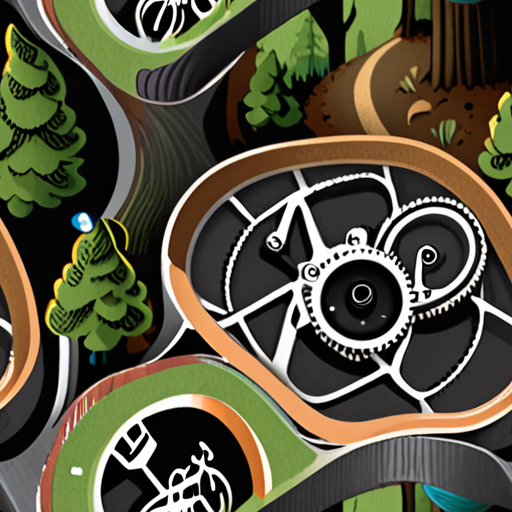The world of cycling has evolved significantly over the years, with advancements in technology leading to the development of diverse bike frame types, each designed to cater to specific riding styles and preferences. From road bikes to mountain bikes, the choice of bike frame can greatly impact a rider’s performance, comfort, and overall experience. With numerous options available, it can be overwhelming for cyclists to determine which type of bike frame suits their needs best. In this article, we will delve into the various types of bike frames, exploring their characteristics, advantages, and disadvantages, to help riders make informed decisions when selecting their ideal bike.

Types of Bike Frames
Bike frames come in various shapes, sizes, and materials, catering to diverse riding styles and terrains.
- Road Bike Frames
- Gravel Bike Frames
- Mountain Bike Frames
- Fat Bike Frames
- Track Bike Frames
- Electric Bike Frames
- BMX Bike Frames
- Fixie Bike Frames
Road bike frames are designed for speed and efficiency, typically made from lightweight materials such as carbon fiber or aluminum.
They feature drop handlebars, narrow tires, and a sleek design, ideal for long-distance rides on paved roads.
For example, our best road bikes for beginners guide provides valuable insights into selecting the perfect road bike frame.
Gravel bike frames blend the comfort of mountain bikes with the speed of road bikes, suitable for mixed-surface rides.
They often feature wider tires, drop handlebars, and a more upright riding position, making them perfect for exploring dirt paths and trails.
Check out our gravel bikes vs mountain bikes comparison to learn more about these versatile frames.
Mountain bike frames are built for off-road adventures, featuring sturdy construction, suspension systems, and wide tires.
They cater to various disciplines, such as cross-country, downhill, and enduro, ensuring riders can tackle challenging terrain with confidence.
Our mountain bike buying guide offers expert advice on selecting the ideal mountain bike frame.
Fat bike frames are designed for snowy and icy conditions, featuring oversized tires and a robust build.
They provide excellent traction and stability, allowing riders to explore winter landscapes with ease.
Learn more about fat bike technology in our fat bikes 101 article.
Track bike frames are optimized for velodrome racing, characterized by a fixed gear, narrow tires, and a streamlined design.
They require riders to develop exceptional skills and endurance, making them a thrilling challenge for experienced cyclists.
Discover the world of track cycling in our track cycling 101 guide.
Electric bike frames integrate advanced motor systems and battery technology, enabling riders to conquer hills and distances with ease.
They offer a convenient and environmentally friendly alternative to traditional bicycles, perfect for commuting or leisure rides.
Explore the benefits of e-bikes in our electric bikes for commuting article.
BMX bike frames are compact, durable, and designed for stunts and tricks, featuring a strong steel or aluminum construction.
They cater to various disciplines, such as racing, freestyle, and dirt jumping, requiring riders to possess exceptional balance and coordination.
Learn more about BMX bikes in our BMX bikes 101 guide.
Fixie bike frames feature a single gear and no derailleur, promoting efficient pedaling and a unique riding experience.
They often appeal to urban cyclists who value simplicity and style, making them an excellent choice for city commutes.
Discover the world of fixie bikes in our fixie bikes 101 article.
Which is Better, Carbon or Titanium?
We often get asked which material is better for our bike frames – carbon or titanium.
- Both materials have their own unique benefits and drawbacks, making it difficult to declare a clear winner.
Titanium Advantages
Titanium has several advantages that make it a popular choice among cyclists:
- Durability: Titanium frames are incredibly durable and can withstand heavy use and harsh weather conditions.
- Corrosion Resistance: Titanium is highly resistant to corrosion, making it ideal for riders who live in coastal areas or ride in wet conditions.
- Strength-to-Weight Ratio: Titanium has a high strength-to-weight ratio, making it an excellent choice for riders who want a lightweight yet strong frame.
- Maintenance: Titanium frames require minimal maintenance and can last for decades with proper care.
Carbon Advantages
Carbon fiber frames have their own set of advantages that make them appealing to many cyclists:
- Lightweight: Carbon fiber frames are extremely lightweight, making them ideal for riders who want to reduce their overall bike weight.
- High Performance: Carbon fiber frames offer exceptional stiffness and responsiveness, making them perfect for high-performance riding.
- Aesthetics: Carbon fiber frames come in a variety of colors and designs, allowing riders to customize their bikes to suit their personal style.
- Cost-Effective: Carbon fiber frames are generally less expensive than titanium frames, making them a more accessible option for many riders.
Comparison
While both materials have their strengths and weaknesses, titanium frames tend to outlast carbon frames over time.
In fact, studies have shown that a single titanium frame can last for up to 20 years, while two or three carbon frames may need to be replaced during the same period.
This is due to titanium’s exceptional durability and resistance to corrosion, making it a more reliable choice for long-term use.
Conclusion
Ultimately, the decision between carbon and titanium comes down to personal preference and riding style.
If you’re looking for a lightweight, high-performance frame with a sleek aesthetic, carbon may be the better choice.
However, if you prioritize durability, corrosion resistance, and a lower maintenance requirement, titanium is likely the better option.
At Leeds Bicycle, we offer a range of frames made from both materials, so be sure to visit us today to find the perfect bike for your needs!

Is Chromoly Better Than Aluminum?
When it comes to choosing the ideal material for your gravel bike, you’re likely torn between chromoly and aluminum. Both materials have their own set of benefits and drawbacks, which we’ll explore below.
Key Differences Between Chromoly and Aluminum
- Compliance and Comfort: Chromoly is known for its ability to absorb vibrations and provide a smoother ride, making it an excellent choice for long-distance riding.
- Lightweight and Fast: Aluminum, on the other hand, is significantly lighter than chromoly, allowing riders to accelerate faster and climb hills with ease.
Pros and Cons of Chromoly
- Pros:
- Excellent compliance and comfort
- Durable and resistant to corrosion
- Can be repaired and maintained easily
- Cons:
- Heavier than aluminum
- More expensive than aluminum
Pros and Cons of Aluminum
- Pros:
- Extremely lightweight
- Faster acceleration and climbing capabilities
- Inexpensive compared to chromoly
- Cons:
- Lacks compliance and comfort
- More prone to corrosion and damage
Choosing the Right Material for Your Gravel Bike
Ultimately, the decision between chromoly and aluminum comes down to your personal preferences and riding style. If you prioritize comfort and durability, chromoly may be the better choice. However, if you’re looking for a lightweight and fast option, aluminum could be the way to go.
We recommend exploring our selection of gravel bikes at Leeds Bicycle to find the perfect fit for your needs.
For more information on bike maintenance and repair, check out our guide on bike maintenance .
Additionally, you can learn more about the benefits of gravel bikes in our article on gravel biking .

The Strongest Bike Frame Design
Bike frames come in various materials, each with its unique strengths and weaknesses.
- Alloy Frames: Known for their durability and affordability, alloy frames offer excellent strength-to-weight ratios.
- Carbon Fiber Frames: Carbon fiber boasts exceptional strength-to-weight properties, making it ideal for high-performance bikes.
- Steel Frames: Steel frames are robust and forgiving, often preferred for commuting and touring bikes.
- Titanium Frames: Titanium offers a perfect balance between strength and weight, making it suitable for endurance and adventure bikes.
When evaluating the strongest bike frame design, consider factors like material selection, tube shapes, and construction methods.
- Material Selection: Choose a material that suits your riding style and preferences.
- Tube Shapes: Optimize tube shapes for maximum stiffness and minimal weight.
- Construction Methods: Select a construction method that ensures precise tolerances and reliable joints.
Some notable manufacturers producing high-quality bike frames include Trek, Specialized, and Giant.
Trek Bikesoffers a range of innovative frame designs, while Specializedfocuses on cutting-edge technology and materials. Giantprovides a variety of frame options for different riding styles and disciplines.
Ultimately, the strongest bike frame design depends on your specific needs and preferences.
Key Considerations
- Riding Style: Choose a frame that suits your riding style, whether it’s road racing, mountain biking, or commuting.
- Weight Capacity: Ensure the frame can handle your weight and any additional cargo.
- Durability: Select a frame that can withstand regular use and harsh weather conditions.
Conclusion is Not Required
Which Bike Frame is Most Durable?
Bike durability depends on several factors, including material choice, usage patterns, and maintenance habits.
- Steel Frames: Known for their strength and resistance to fatigue, steel frames can withstand heavy loads and harsh conditions. However, they may rust if not properly maintained.
- Aluminum Frames: Lightweight and corrosion-resistant, aluminum frames offer excellent durability and ease of maintenance. They are ideal for casual riders who want a reliable bike.
- Carbon Fiber Frames: High-performance carbon fiber frames are incredibly lightweight and resistant to fatigue. However, they require regular maintenance to prevent damage from minor impacts.
- Titanium Frames: Strong, lightweight, and corrosion-resistant, titanium frames offer exceptional durability and versatility. They are suitable for both casual and competitive riders.
When choosing a bike frame, consider your riding style, terrain, and personal preferences. A well-maintained bike frame can last for many years, regardless of the material chosen.
At Leeds Bicycle, we recommend regular inspections and maintenance to extend the lifespan of your bike frame. Our team of experts can help you choose the perfect frame for your needs and provide guidance on proper maintenance techniques.
For more information on bike maintenance and repair, visit our maintenance guides page or check out our bike repair tips section.
We also encourage you to explore other reputable brands, such as Trek Bicycles ( Trek Bikes ) and Specialized ( Specialized ), which offer high-quality bike frames and accessories.
Remember to always follow best practices for bike maintenance and repair to ensure your bike remains safe and durable for years to come.

What is an Aggressive Bike Frame?
An aggressive bike frame refers to a design that prioritizes speed, agility, and responsiveness over comfort and stability.
- Characteristics of an aggressive bike frame include:
- A lower standover height, allowing riders to easily maneuver the bike in tight spaces
- A longer wheelbase, which can improve stability at high speeds
- A slacker head tube angle, enabling riders to carve through corners with greater precision
- A steeper seat tube angle, promoting a more aggressive riding position
- A shorter chainstay length, reducing the distance between the rear wheel and the bottom bracket
In contrast to endurance bikes, aggressive frames often feature:
- A more upright handlebar position, placing the rider in a more aerodynamic position
- A narrower tire width, reducing rolling resistance and increasing speed
- A lighter weight construction, allowing riders to accelerate quickly and climb steep hills
Aggressive bike frames cater to riders who prioritize speed, agility, and technical ability over comfort and long-distance touring capabilities.
At Leeds Bicycle, our team of experts can help you choose the perfect aggressive bike frame based on your riding style and preferences.
We offer a wide range of aggressive bike frames from top manufacturers, including Trek, Specialized, and Giant.
Contact us today to learn more about our aggressive bike frames and schedule a test ride!
Conclusion
In conclusion, an aggressive bike frame is designed for riders who crave speed, agility, and technical ability.
With its unique combination of characteristics, an aggressive bike frame is ideal for riders who tackle challenging terrain, participate in downhill racing, or simply enjoy the thrill of high-speed riding.
At Leeds Bicycle, we’re committed to helping you find the perfect aggressive bike frame to match your riding style and preferences.

0 Comments